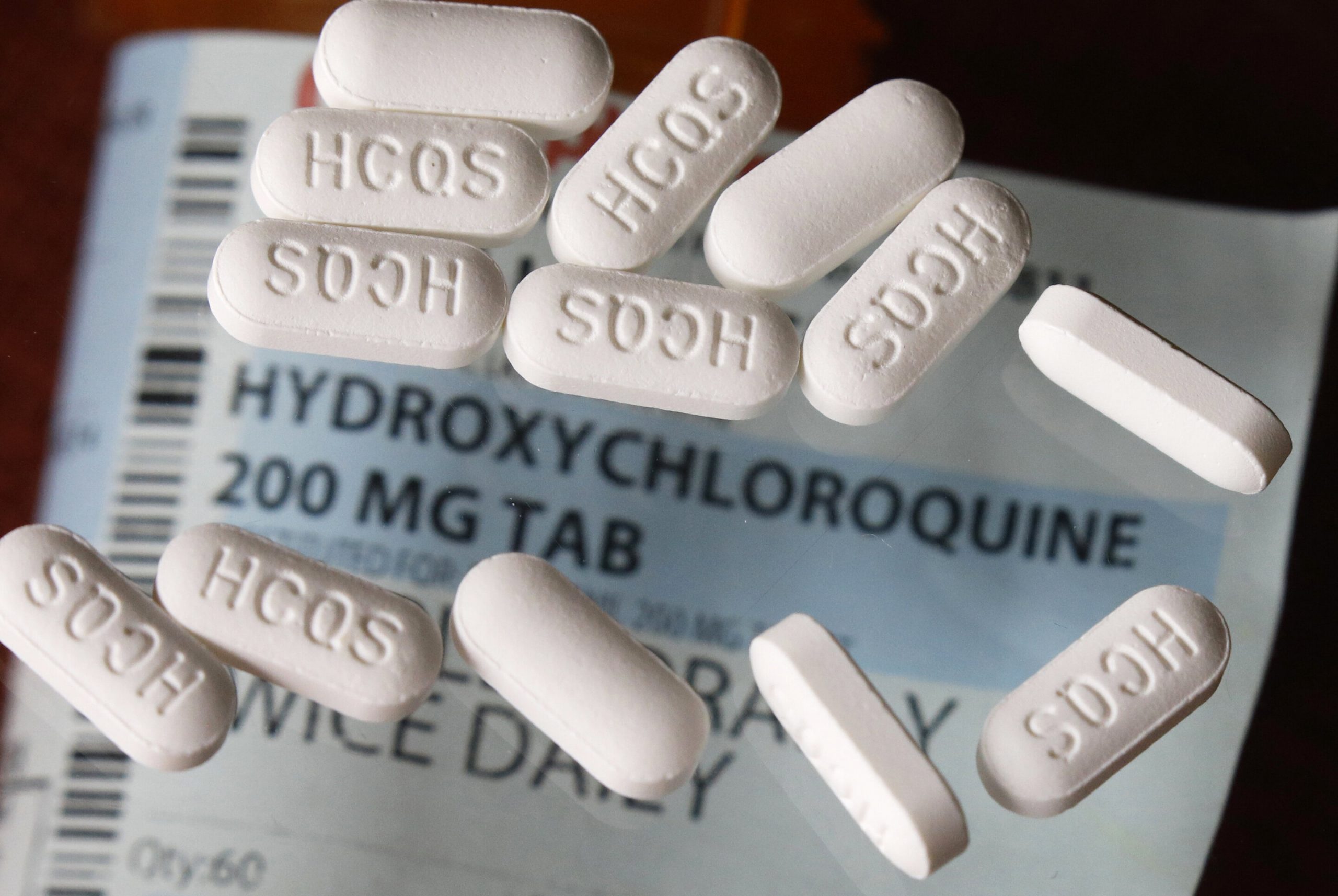The ruling class is desperate to keep the truth under wraps this November.
Why Do You Know That?

Misinformation, disinformation, and the 1619 Project
Earlier this year, Joe Biden asked social media companies to engage in more censorship in an effort to divert attention from the wholesale failure of his administration to “shut down the virus.” In a televised speech, he said “I make a special appeal to social media companies and media outlets: please deal with the misinformation and disinformation that’s on your shows. It has to stop.”
More recently, CNN denounced “misinformation” that blamed high gas prices and inflation on the Biden administration. Media outlets have accused Joe Rogan of “spreading disinformation” about Covid-19 and the vaccine because… he dared to ask scientific experts questions on these topics. Other examples of ideas that the legacy media has alternately labelled as “misinformation” and “disinformation” include assertions that Covid-19 escaped from a lab in Wuhan, China; the idea that there was some orchestrated manipulation of procedures to favor Biden in the 2020 election; that Hunter Biden’s laptop offered evidence that the Biden family had been enriched by various forms of international corruption; and that powerful NGOs and world governments are leveraging the pandemic to facilitate a “Great Reset” of the global economy. The campaign to ban these claims – most which are demonstrably true – indicates not a dangerous spread of “disinformation,” but a dangerous weaponization of the concept of disinformation in order to insulate the institutional left from criticism and opposition.
It is no accident that virtually every claim that is consistently labelled as disinformation is one that threatens the policy agenda of the Democratic party (or parts of their agenda that they are too embarrassed to state publicly). “Disinformation” is no longer a concept used to separate truth from falsehood. In the past few years, it has been rhetorically intensified to circumvent the question of truth entirely. It is a means to annex the public’s role in assessing the validity of reporting, placing this authority solely in the hands of “experts” who have the exclusive right to say what is “true.” Understanding the differences between “misinformation” and “disinformation” and observing the ways these concepts are arbitrarily applied is crucial to grasping how our media and other institutions undermine genuine public deliberation—a prerequisite for any functioning democracy.
Meanings Matter
Since the rise of Trump and the media’s waning ability to control the terms of public debate in the information age, legacy and government-adjacent outlets have been in a sustained panic about misinformation and disinformation. Misinformation is information that is simply wrong or incorrect, while disinformation is the deliberate spread of false information. In other words, whereas the misinformer doesn’t know that what they are saying is false, the disinformer does know.
Despite these differences, the terms are used interchangeably by the media at large. This is important. Is the left accusing Joe Rogan spreading “misinformation” or “disinformation”? Answering this question is difficult: it requires some knowledge of what Rogan knows and what he doesn’t. If he doesn’t know that what he says is (allegedly) false, then he’s not a bad guy—he just needs to be informed of the truth. But if he knows what is (allegedly) true and decides to ignore those truths in order to advance his agenda, this is something more nefarious.
The line between misinformation and disinformation is deliberately obscured to ensure that people who are disseminating information that is inconvenient for those in power can be smeared as a malevolent threat to (the catchphrase runs) “our democracy”. The motives of the populists must always be characterized as nefarious – to acknowledge that they engage the dialogue in good faith would require those in power to enter the sphere of debate. That process of debate is what they are trying to silence and avoid: you can’t lose a debate that never occurs.
Disinformation and the 1619 Grift
At the beginning of February, everyone at my university received a Black History Month email announcing that Nikole Hannah-Jones—founder of the New York Times Magazine’s 1619 Project—would be giving a virtual talk with students and faculty. Her presentation was called “Inclusive Excellence and the Way Forward: Truth, History, and the 1619 Project.” The 1619 Project’s central claim is that protecting slavery was the true impetus for the formation of the American republic, and therefore that our national “narrative” and identity should be viewed primarily through the lens of slavery. The project is named “1619” because that was the year that the first ship of African slaves arrived on the American coast— an event that 1619 proponents cite as the “true” founding of our nation (instead of 1776, and preceding even 1620). The claims of the 1619 Project have been definitively debunked by the leading historical experts on America’s founding: thus, Hannah-Jones has little authority to talk about “history” and “truth.”
When I learned of her talk, I immediately reserved my spot: I knew the affair would be tightly managed to ensure that no one on campus could disrupt the celebration of the 1619 fictions. Her presentation lasted 75 minutes. Over that period, I observed almost every hallmark of disinformation. In other words, it was evident that Hannah-Jones was spouting falsehoods, that she knew they were false, and that she was presenting those falsehoods as true in an effort to manipulate the public perception of reality.
Hannah-Jones opened by reminding the audience that her primary training is in journalism, not history, yet she claimed that “people tend to think of the 1619 Project as a work of history.” This is false. Sean Wilentz, the Princeton history scholar, published a letter with four other historians (among the most prestigious experts on the topic of the early Republic) which detailed the basic errors upon which the 1619 narrative was built. In the pages of The Atlantic, Wilentz explained that they wrote the letter because of “specific statements that, if allowed to stand, would misinform the public.”
Hannah-Jones never substantively responded to the volume of evidence marshalled by these experts against her account—instead she simply said she would have taken them more seriously had they contacted her or the New York Times before publishing the letter. Thus, she missed an opportunity to give a revised, more truthful account of history. Instead, she continues to rehearse the same falsehoods. This is the definition of disinformation, and she aggressively spread it at her talk.
An indicator of disinformation is the absence of important contextual information that would mitigate the truth status of a speaker’s claims. The so-called “fact-checkers” of the mainstream media understand this: they often label assertions “false” on the grounds of “missing context.” Yet the fact-checkers are uninterested in Hannah-Jones’ disregard of important contextual factors that would limit the force of her argument. The 1619 Project argues that anti-black racism is “in the DNA” of our country – as if slavery is unique to America. Hannah-Jones studiously avoids the global history of slavery – an institution that has existed all over the world, subjugating peoples of every race, color, and creed, since the beginning of civilization.
Further, the 1619 Project is silent about how widespread slave ownership was in antebellum America. The large majority of free people in the antebellum south never owned a single slave. This is not at all to deny the specific inhumanity that African slaves endured in America, but to deflate the claims that all white Americans held, and hold, collective race culpability for the institution and that anti-black racism is in the American “DNA.” Finally, of course, the 1619 Project ignores the role that Africans had in facilitating and maintaining the slave trade, a fact that undermines the idea that American slavery was an atrocity perpetrated exclusively by white people. This contextual information is left out of the racialist account of American history precisely because it would diminish the rhetorical power of that account: a telling feature of disinformation.
Disinformation can often be recognized when you see its purveyors shifting standards when it comes to verification. Truth is critical for historical work – it matters what actually happened. The impetus for the 1619 Project, according to Hannah-Jones, is a concern for the truth. She claims that Americans are afflicted by a “nationalized amnesia.” By this she means that slavery (and its “true” role in the early republic) has been forgotten or is unknown to Americans. But slavery is constantly invoked in the public sphere—relentlessly, these days. Hannah-Jones also insisted that the 1619 Project is meant to ensure that children “don’t get a whitewashed version of our history,” implying that the traditional accounts of American history are fabricated. She further asserted that white resistance to critical race studies being taught in classrooms (a fact she denied) is a product of their frustration that they are no longer able to “control the narrative.”
In short, Hannah-Jones frames her project as a truth-telling exercise that aims to displace untruths. And yet, when experts on the history of our country contest the claims of Hannah-Jones’ claims by demonstrating that they are factually false, she retreats to the concept of “narrativity,” which implies that all historiography is just storytelling and that no story can be wrong. From this perspective, all history is merely subjective interpretation. She made use of this fig leaf repeatedly in her talk: referencing the experts who have debunked her account, she said “It’s fine to say ‘I disagree,’ but do you need to discredit it?” But the truth matters, not just for its own sake but because one’s “narrativity” undermines one’s moral claims, whatever they be. Attacking the traditional understanding of our history as false while hawking a historical fiction as truth is a tactic that defines disinformation campaigns.
A final sign of disinformation is an adamant refusal to engage with ideas and claims that are at odds with the propaganda effort. During her talk, Hannah-Jones dodged the scholarly attacks on her project by saying that they are driven by “credentialism” – suggesting that somehow the scholars have rejected her work because, as experts, they feel entitled to be the arbiters of history and are jealous that a journalist took on the task of writing history. But her scholarly critics have taken issue only with her presentation of historical facts, not with her professional status.
The Disinformation Campaign About Disinformation
Hannah-Jones’ work is only one of innumerable examples of disinformation on the left. Yet the term is applied exclusively for dialogue that comes from the political right. The left’s interchangeable usage of misinformation and disinformation is part of an effort to make these concepts more malleable, so that they can be effectively applied to any undesirable information that gets past the censors. In short, this means that the media’s constant cautioning about disinformation is in fact a disinformation campaign in itself. The application of these labels allows them to propagate the idea that only their political opponents traffic in falsehoods. By strategically accusing their enemies of spreading misinformation and disinformation, they paradoxically insinuate that average Americans are both too dumb to discern the truth for themselves, and evil enough to actively conceal or distort what they know to be true.
The weaponization of the concept of disinformation to achieve political ends is a greater threat to whatever’s left of American democracy than any isolated pieces of actual disinformation could ever be. Democracy is built on the assumption that typical citizens can discern the truth, and that they have the capacities necessary to develop and implement situations to the problems they face. The elite disinformation campaign on disinformation implies not only that regular Americans should not play any meaningful role in governance, administration, or deliberation—it insinuates that they don’t have the cognitive ability to learn the truth and to know it when they see it. It doesn’t get more anti-democratic than that.
A textual transcript of the Hannah-Jones presentation referenced in this essay can be acquired by contacting the author.
The American Mind presents a range of perspectives. Views are writers’ own and do not necessarily represent those of The Claremont Institute.
The American Mind is a publication of the Claremont Institute, a non-profit 501(c)(3) organization, dedicated to restoring the principles of the American Founding to their rightful, preeminent authority in our national life. Interested in supporting our work? Gifts to the Claremont Institute are tax-deductible.
Big tech and big media are betraying the truth—and the people.
The number one obstacle to vaccine uptake is vaccine propaganda.



